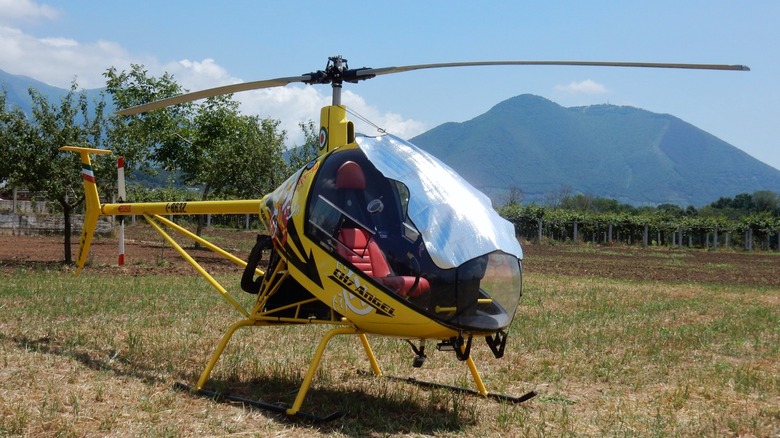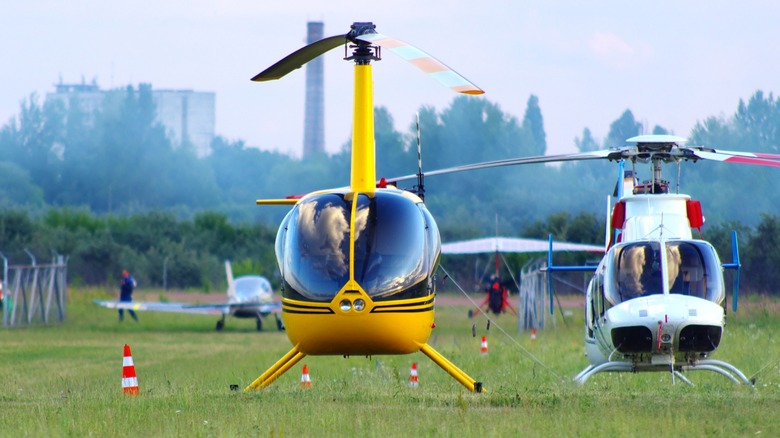Are There Any Helicopters You Can Fly Without A Pilot's License?
Believe it or not, there are actually helicopters you can fly without a pilot's license. However, the FAA has made it clear in Title 14, Section 103 of the Code of Federal Regulations (CFR) that these must meet certain fundamental requirements. For a rotorcraft to be considered legally ultralight, it must have a single seat, weigh less than 254 lbs powered or 155 lbs unpowered, have less than 5 gallons of fuel, stall at a maximum of 24 knots, reach a max cruise speed less than 55 knots, and be used only for recreation and sports.
While that's quite a list of requirements, just wait, there's more. Getting a helicopter that meets the requirement is one thing, but you're still heavily restricted on when, where and how you can fly your ultralight helicopter. You can't fly over congested areas or gatherings (so, no cities or towns), you can't fly near airports without authorization from Air Traffic Control (ATC), you can only fly between sunrise and sunset, and you must navigate using only visibility of the surface below (visual flight) because that's the only legal way to fly an ultralight.
Fun fact: going by these regulations, jetpacks would count as ultralight vehicles.
Are there any commercial ultralight helicopters?
It's very easy to exceed the FAA's stipulated weight limit for ultralight vehicles. For that reason — and what seems to be a niche, non-standardized, liability-ridden hobby — many manufacturers seem to avoid ultralights. That's why enthusiasts often build from a kit or at home. If you're curious about how personal flight tech fits into this category, we have a solid rundown on flying gadgets that explains how some of them qualify as ultralights and don't require a license.
If you're serious about building one, the Experimental Aircraft Association and the United States Ultralight Association offer communities and guidance to help you fly safely.
If you're looking to buy an ultralight helicopter, the Mosquito XEL stands out as one of the best choices of the lot. It was made with Section 103 of the FAA regulation in mind and is equipped with floats instead of skids. While the floats take the weight over the minimum 254 lbs, Section 103.1(e)1 excludes floats and emergency safety devices. That means you could fly this helicopter as an ultralight, no problem. There are a few others, like the Helicycle by Eagles R&D and Dynali H3 Sport, but these would require some work to get them down to the regulated weight.
Above the required ultralight weight, a home or kit-built ultralight helicopter becomes an experimental amateur-built rotorcraft (per Section 21.191 of the CFR) which would then require an FAA registration and, at least, a private pilot certificate.

